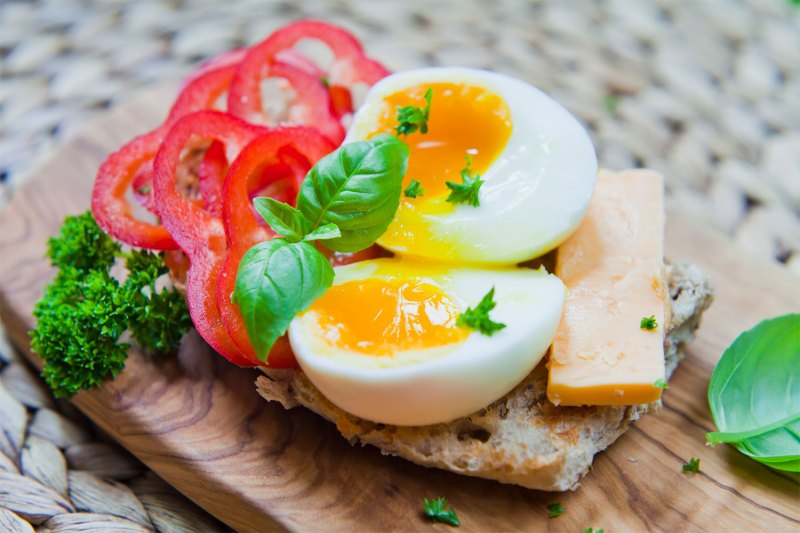Thanks to cooking shows, YouTube videos, and endless Instagram streams, “foodie” terminology becomes more and more widespread with every passing day. You may hear acquaintances with no formal culinary training discussing “artisanal” cheese or butcher shops, casually describing a meal as a “farm-to-table” experience, or tossing the word “umami” around with abandon.
But sometimes, cheffy shorthand can cause confusion among laypeople, so we end up with a vocabulary of terms that we use in conversation but don’t completely understand. A prime example (and one that’s plagued this writer on more than one occasion): What exactly is a “jammy” egg? Contestants and judges on the Food Network love this adjective, but what sets a jammy egg apart from a typical soft-boiled version? How do you make this ovate specialty … and, more importantly, how do you eat and enjoy it? You’ll find the answers below, along with useful tips from professional “eggs-perts” (haha, see what we did there?).
What defines a “jammy” egg?
When it comes to figuring out what a “jammy” egg really entails, you can rest assured that the answer is right in the name. “A jammy egg is a soft-boiled egg with a yolk that can be spread like jam,” explains owner Cory Harwell of Carson Kitchen in Atlanta.

“A jammy egg is a thing of beauty,” adds chef (and Top Chef finalist) Adrienne Cheatham of the Institute of Culinary Education in New York City. “It’s an egg cooked until the white is set but still tender, and the yolk is a soft, custardy, spreadable texture. It is a soft-boiled egg, but one where the yolk is just barely runny in the very center, but not runny enough to spill out over your plate when sliced open.”
What’s the best way to enjoy a jammy egg?
Like its namesake, a jammy egg yolk truly shines when spread over a piece of crusty golden toast. “I like to keep it simple and serve sliced jammy eggs on crunchy, buttered toast with prosciutto or just a few slices of avocado,” insists Cheatham.
For a non-toast-related way to use a jammy egg, follow the advice of chef Darnell Ferguson of SuperChefs in Louisville: “I like to use [jammy eggs] with fried rice because they give a whole different [level of] creaminess to the dish. The best way to make it is to [gather] day-old rice, roasted red peppers, spinach, caramelized onions, vegetable oil, soy sauce, and a touch of sweet chili sauce. Get the sauté pan hot, add your oil until it’s hot as well, then add the rice and cook for about two minutes until it starts changing color. Then, add the vegetables to the mix, make a well in the center of the sauté pan, and crack an egg in the well and scramble. At the very end, add the sweet chili and soy sauce. Put the rice on the plate, then cut your jammy egg in half and place on top of the rice.”

How do you make a jammy egg?
To make a perfectly jammy egg, Cheatham starts off with slightly older eggs rather than their fresh equivalents, because “eggs that are a week old or more tend to be easier to peel as they lose a little water content as they ‘age’ and pull away from the shell slightly.”
Next, she tells us to “bring a pot of water to a boil and place cold, large-sized eggs into the water. You can cook as many (or as few) eggs as you like, but use a general rule of 1 cup of water per egg (4c water to 4 eggs) and make sure that the pot is deeper than it is wide. The boiling water should cover the eggs by about 2 inches. Once the eggs are in the water, start the timer and let the eggs cook for 7 minutes. Immediately transfer the eggs to a bowl of ice water to stop the cooking process and cool for 1-2 minutes. Then, crack the shell all around and peel.”



